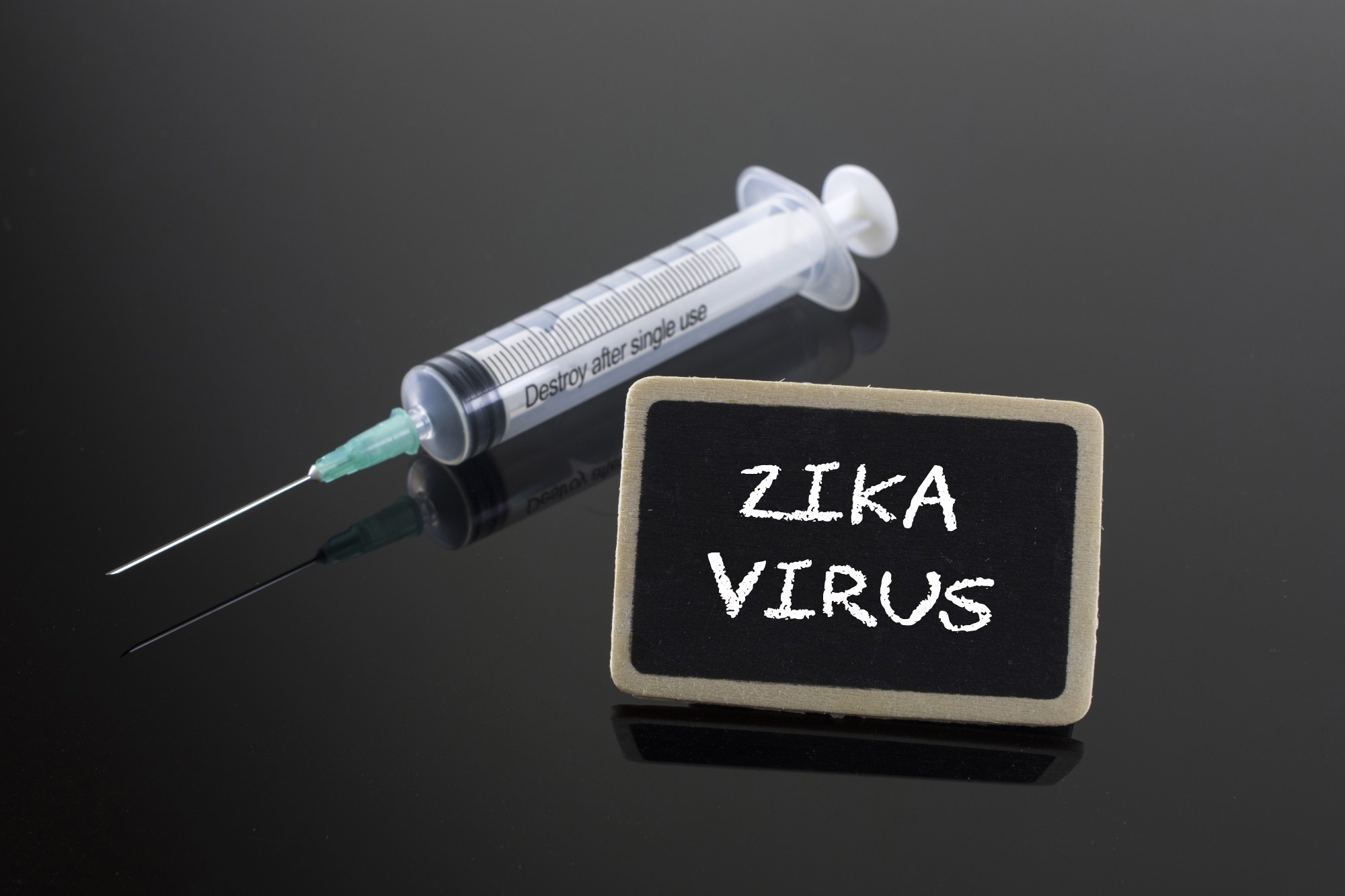In a recent article published in the Lancet Infectious Diseases, researchers performed a phase I randomized clinical trial between November 7, 2016, and October 30, 2018, in the United States of America (USA) to assess the safety and immunogenicity of an inactivated Zika virus vaccine candidate.
 Study: Safety and immunogenicity of a purified inactivated Zika virus vaccine candidate in adults primed with a Japanese encephalitis virus or yellow fever virus vaccine in the USA: a phase 1, randomised, double-blind, placebo-controlled clinical trial. Image Credit: AzriSuratmin/shutterstock.com
Study: Safety and immunogenicity of a purified inactivated Zika virus vaccine candidate in adults primed with a Japanese encephalitis virus or yellow fever virus vaccine in the USA: a phase 1, randomised, double-blind, placebo-controlled clinical trial. Image Credit: AzriSuratmin/shutterstock.com
Background
The Walter Reed Army Institute of Research in the United States of America (USA) developed an inactivated and purified whole Zika virus vaccine (ZPIV) after the Zika virus outbreak of 2015-2016 that hit Brazil, Southern and Central America, the southern USA, and the Caribbean.
The Zika virus was endemic in sub-Saharan Africa and the Indian Ocean basin for decades. Much later, scientists discovered that it was a pathogen of public health importance because it caused severe congenital defects and neurological disorders.
Since the Zika virus became a global health priority, there was a need for its vaccine. More importantly, there was a need to assess the safety and immunogenicity of ZPIV among flavivirus-naive participants and those primed with Japanese encephalitis virus and yellow fever vaccines, viz., IXIARO and YF-VAX.
Previous studies have found that flavivirus vaccination or exposure to its heterologous antigens affects immune responses elicited by related flavivirus vaccines, such as ZPIV.
Researchers have studied ZPIV, its immunogenicity, and its safety in non-clinical models.
They also found it immunogenic and well-tolerated in human clinical trials. However, studies have not examined the effect of pre-existing flavivirus immunity on the immune outcomes of adult individuals vaccinated with ZPIV.
About the study
For this phase I, double-blind, placebo-controlled trial, researchers recruited 18 to 49-year-old adults with no previous flavivirus exposure (by infection or vaccination), confirmed by a microneutralization assay. The study cohort did not have pregnant females and individuals with serological evidence of human immunodeficiency virus (HIV), hepatitis B, or hepatitis C infections.
Next, the researchers recruited participants sequentially in a ratio of 1:1:1 to three groups. The first, second, and third group participants received no priming vaccine, two doses of intramuscular IXIARO, and a single subcutaneous YF-VAX dose received 72 to 96 days before the ZPIV shot.
Further, the team randomly assigned participants in all groups in a 4:1 ratio to receive intramuscular ZPIV or placebo, administered two or three times on Days zero and 28. The vaccine comprised 5 μg protein and 500 μg aluminum hydroxide adjuvant, and the placebo was 0·9% sodium chloride solution.
The team analyzed primary study outcomes, i.e., systemic, local adverse events, serious adverse events (SAE), and adverse events of special interest (AESI), in recipients of at least one ZPIV or placebo dose. They assessed solicited adverse events up to seven days post-vaccination and unsolicited adverse events up to day 28 after vaccination.
They also collected blood samples for safety, immunological, and immunogenicity analyses at baseline and one and four weeks after each ZPIV vaccination. The study's secondary outcome was an assessment of neutralizing antibody (nAb) titers post-ZPIV vaccination among participants for whom post-vaccination data was available.
The study follow-up continued for 184 days after the third ZPIV dose, though select participants received it per study protocol and up to 378 days after the second ZPIV dose.
A microneutralization titer of 1:10 or more indicated seropositivity, i.e., Zika virus-specific nAbs and nAbs against yellow fever and Japanese encephalitis viruses, before and after ZPIV vaccination.
Note that the team used a high-throughput microneutralization assay for immunogenicity analyses of the study. The researchers also tested pre- and post-vaccination sera for binding antibody responses post-ZIPV vaccination by an enzyme-linked immunosorbent assay (ELISA). Finally, the team performed cellular immunogenicity assays.
Results and conclusions
Of 134 people screened during the study periods, 75 met the inclusion criteria, of which 40 were female. The authors noted that ZPIV was well-tolerated across all three study groups,
flavivirus naive, IXIARO-primed, and YFVAX-primed groups. Based on one-year follow-up data, it also posed no significant safety issues.
Notably, ZPIV elicited adequate nAb titers with two doses in volunteers primed with the yellow fever vaccine or Japanese encephalitis vaccine. However, the elicited immune response required three ZPIV doses to remain durable.
Perhaps a recent Flavivirus exposure impaired or delayed immune response to ZPIV, which likely impaired its protective efficacy.
This data provided much-needed insights into the correct number of doses needed for primary vaccination with ZIPV. The study data also showed the effect on patients with recent heterologous flavivirus exposures and the mechanisms governing immunological interplay among related flaviviruses.
However, future studies should explore other mechanisms governing these immune responses so that researchers develop a deeper understanding of flavivirus immunity.